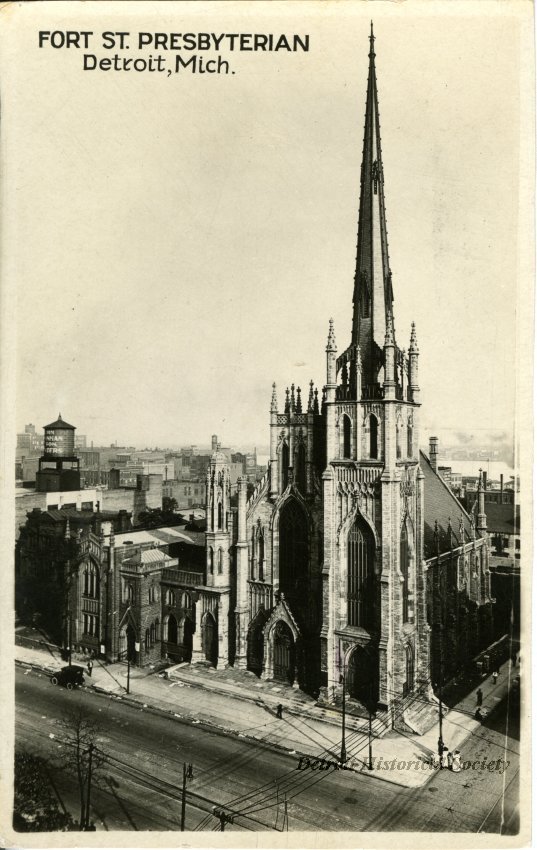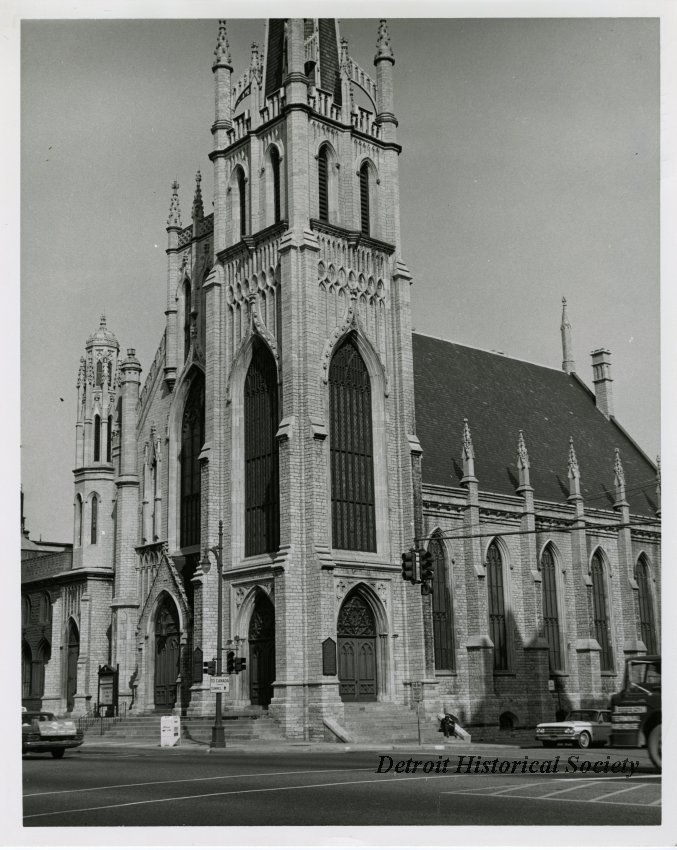In 1849, Reverend Robert Kellogg organized the Second Presbyterian Church with twenty-six charter members. The congregation met in the old State Capitol building until a church on the corner of Lafayette and Wayne Streets was built in 1850. The church was destroyed by fire in January 1854. Population was growing to the southwest of downtown so the Presbyterians decided to purchase land for their new church at the intersection of West Fort and Third Streets. The building was designed by Octavius and Albert Jordan in Gothic Revival style. The church was completed in 1855 and the name changed to Fort Street Presbyterian Church.
The building was damaged by fires in 1876 and 1914 and was subsequently rebuilt each time to the original design. The church is an ornately detailed Gothic Revival structure built of limestone ashlar from Malden, Ontario. The facade features a 265 feet tall square tower with a spire on one side and a shorter octagonal turret on the other. A central stained glass window illuminates the sanctuary. There are bays along the side of the church with flying buttresses, lacy stonework and tall windows.
The pews are of hand-carved black walnut and the baptismal font is constructed of Caen stone, supported by onyx columns imported from Mexico. Tiles dotting the stone floor are early works of Mary Chase Perry Stratton, founder of Pewabic Pottery. The solid brass eagle lectern was exhibited at the 1893 World's Columbian Exposition in Chicago. The organ was built by Wangerin-Weickhardt in 1914 and incorporates a portion of the 1877 instrument.

